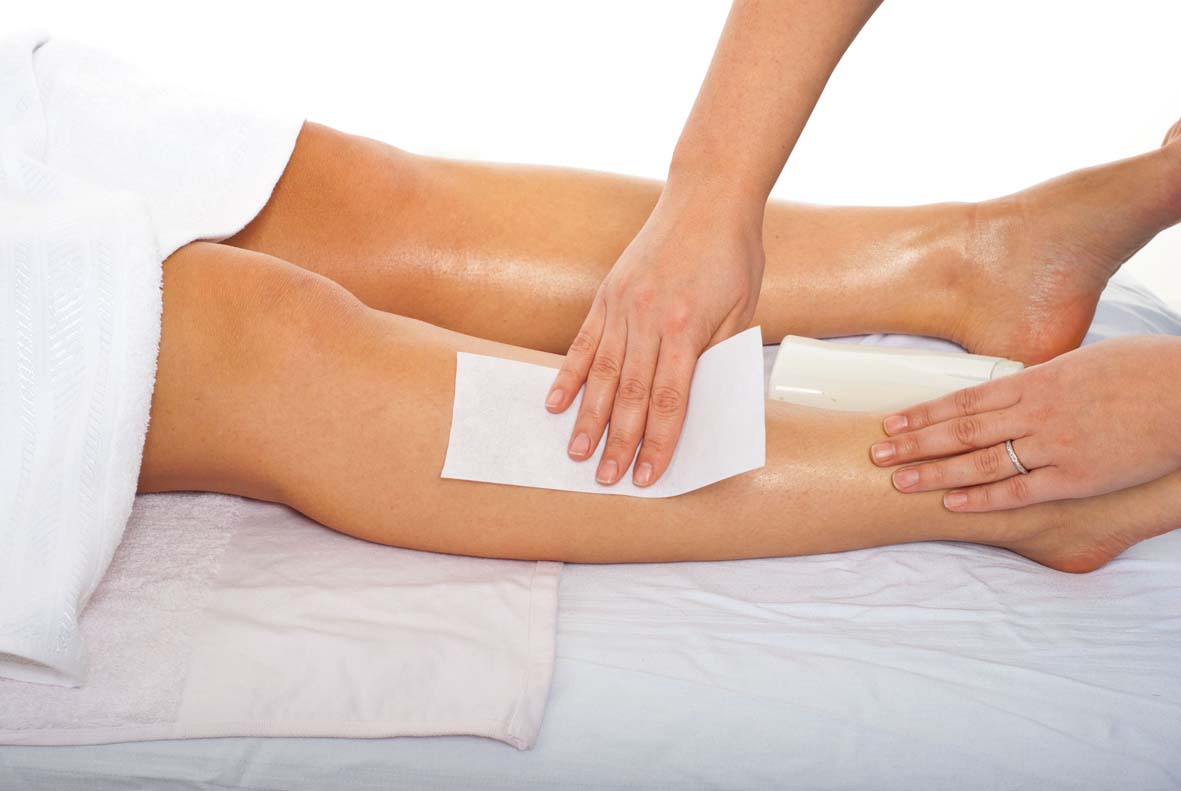Introduction: Unveiling the Art of Waxing
Waxing is a time-honored method of hair removal that has been practiced for centuries, dating back to ancient civilizations. Today, it remains a popular choice for achieving smooth, hair-free skin on various parts of the body, including the legs. However, achieving optimal results with waxing requires careful consideration of factors such as hair length. In this comprehensive guide, we’ll delve into the art of waxing and explore the ideal length for smooth leg results.
Understanding the Waxing Process
Before delving into the ideal hair length for waxing, it’s essential to understand the waxing process itself. Waxing involves applying a sticky substance—typically made from natural resins or synthetic polymers—to the skin, allowing it to adhere to the hairs. Once the wax hardens, it is swiftly removed, pulling the hairs out from the root and leaving the skin smooth and hair-free.

The Importance of Hair Length
Hair length plays a crucial role in the effectiveness of waxing. If the hair is too short, the wax may struggle to grip the hairs firmly, resulting in incomplete hair removal and a less-than-smooth finish. On the other hand, if the hair is too long, it can cause unnecessary pain and discomfort during the waxing process.
Finding the Goldilocks Length: Not Too Short, Not Too Long
Achieving the perfect balance in hair length is akin to the “Goldilocks” principle—not too short, not too long, but just right. Ideally, the hair should be long enough to be firmly grasped by the wax but not so long that it causes unnecessary pain or difficulty during removal.
The Recommended Hair Length for Waxing Legs
The recommended hair length for waxing legs typically falls within the range of 1/4 to 1/2 inch (6 to 12 millimeters). This length allows the wax to effectively grip the hairs, ensuring thorough removal from the root while minimizing discomfort for the individual undergoing the waxing procedure.

Shorter Isn’t Always Better: Why Patience Pays Off
While it may be tempting to wax shorter hairs for a quick fix, patience truly pays off when it comes to waxing. Attempting to wax hairs that are too short can result in subpar results, as the wax may struggle to adhere to the hairs adequately. Additionally, repeated waxing of shorter hairs can lead to skin irritation and ingrown hairs—a common concern for many individuals.
The Benefits of Longer Hair for Waxing
Although longer hair may require a bit more patience and preparation, it offers several benefits when it comes to waxing. Longer hairs are easier for the wax to grip, ensuring more thorough removal and smoother results. Additionally, waxing longer hairs can help minimize the risk of ingrown hairs, as the hairs are less likely to become trapped beneath the skin’s surface.

Preparing for Waxing: Tips for Optimal Results
To ensure optimal results with waxing, it’s essential to properly prepare the skin and hair beforehand. Here are some tips to help you get the best possible results:
Exfoliate the Skin: Exfoliating the skin a day or two before waxing can help remove dead skin cells and debris, allowing the wax to adhere more effectively to the hairs.
Trim the Hairs: If the hairs are excessively long, consider trimming them to the recommended length of 1/4 to 1/2 inch (6 to 12 millimeters) before waxing. This will make the waxing process more comfortable and efficient.
Avoid Moisturizers: Refrain from applying moisturizers or lotions to the skin on the day of your waxing appointment, as these products can create a barrier that interferes with the wax’s ability to adhere to the hairs.
Take Pain Relievers if Necessary: If you’re concerned about discomfort during the waxing process, consider taking an over-the-counter pain reliever, such as ibuprofen or acetaminophen, 30 minutes to an hour before your appointment.

Soft Waxing: Classic and Effective
Soft waxing, also known as strip waxing, is perhaps the most traditional method of waxing. It involves applying a thin layer of warm wax to the skin and then using cloth or paper strips to remove the wax along with the hairs. Soft waxing is effective for larger areas such as the legs and provides smooth results.
Advantages of Soft Waxing:
- Efficiency: Soft waxing covers larger areas quickly, making it ideal for legs.
- Affordability: Soft waxing kits are often more affordable than other waxing methods.
- Accessibility: Many salons and spas offer soft waxing services.
Considerations for Soft Waxing:
- Sensitivity: Some individuals with sensitive skin may experience redness or irritation.
- Hair Length: Hair should be at least 1/4 inch long for optimal results with soft waxing.

Hard Waxing: Gentle and Precise
Hard waxing, also known as stripless waxing, is a gentler alternative to soft waxing. This method involves applying a thick layer of warm wax directly to the skin. Once the wax hardens, it is peeled off without the need for strips. Hard waxing is particularly suitable for sensitive areas and can be less painful than soft waxing.
Advantages of Hard Waxing:
- Gentle on Skin: Hard wax adheres primarily to the hairs, reducing pulling on the skin.
- Less Painful: Many individuals find hard waxing less painful than soft waxing, especially in sensitive areas.
- Effective for Coarse Hair: Hard wax is excellent for removing coarse or stubborn hairs.
Considerations for Hard Waxing:
- Skill Required: Proper application and removal technique are crucial for optimal results.
- Hair Length: Hair should be at least 1/4 inch long for hard waxing to be effective.
Sugar Waxing: Natural and Skin-Friendly
Sugar waxing, also known as sugaring, is a natural hair removal method that dates back centuries. It involves using a sticky paste made from sugar, lemon juice, and water to remove hair. Sugar waxing is known for being gentle on the skin and is suitable for sensitive areas like the legs.
Advantages of Sugar Waxing:
- Natural Ingredients: Sugar waxing paste typically contains natural ingredients, making it suitable for sensitive skin.
- Less Irritation: Many individuals experience less irritation and redness with sugar waxing compared to traditional waxes.
- Exfoliating Benefits: Sugar waxing can also act as a mild exfoliant, leaving skin smooth and soft.
Considerations for Sugar Waxing:
- Consistency: Achieving the right consistency for the sugar wax paste may require practice.
- Hair Length: Hair should be at least 1/8 to 1/4 inch long for effective sugar waxing.
Conclusion: Striving for Smooth, Silky Skin
In the quest for smooth, silky skin, the ideal length for waxing legs is a crucial consideration. By ensuring that the hair is neither too short nor too long, individuals can achieve optimal results with waxing, minimizing discomfort and maximizing effectiveness. With proper preparation and patience, waxing can be a highly effective method of hair removal, leaving legs feeling irresistibly smooth and beautiful.








